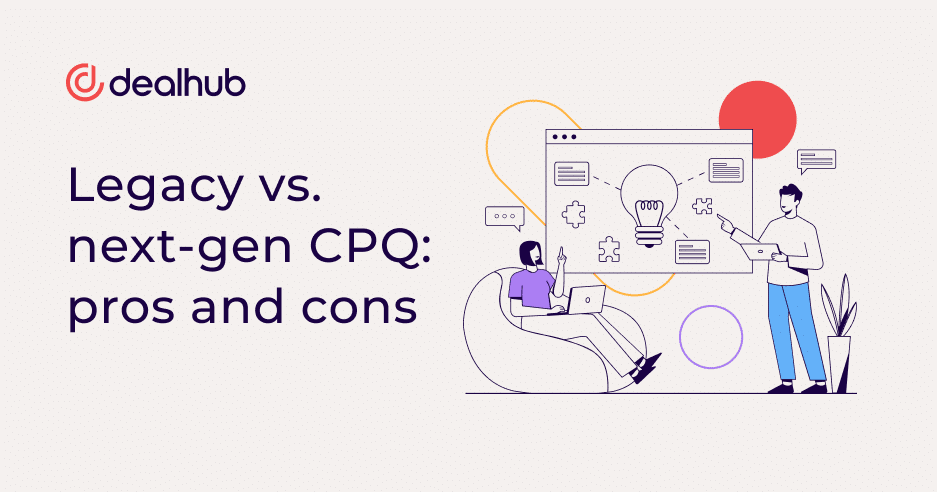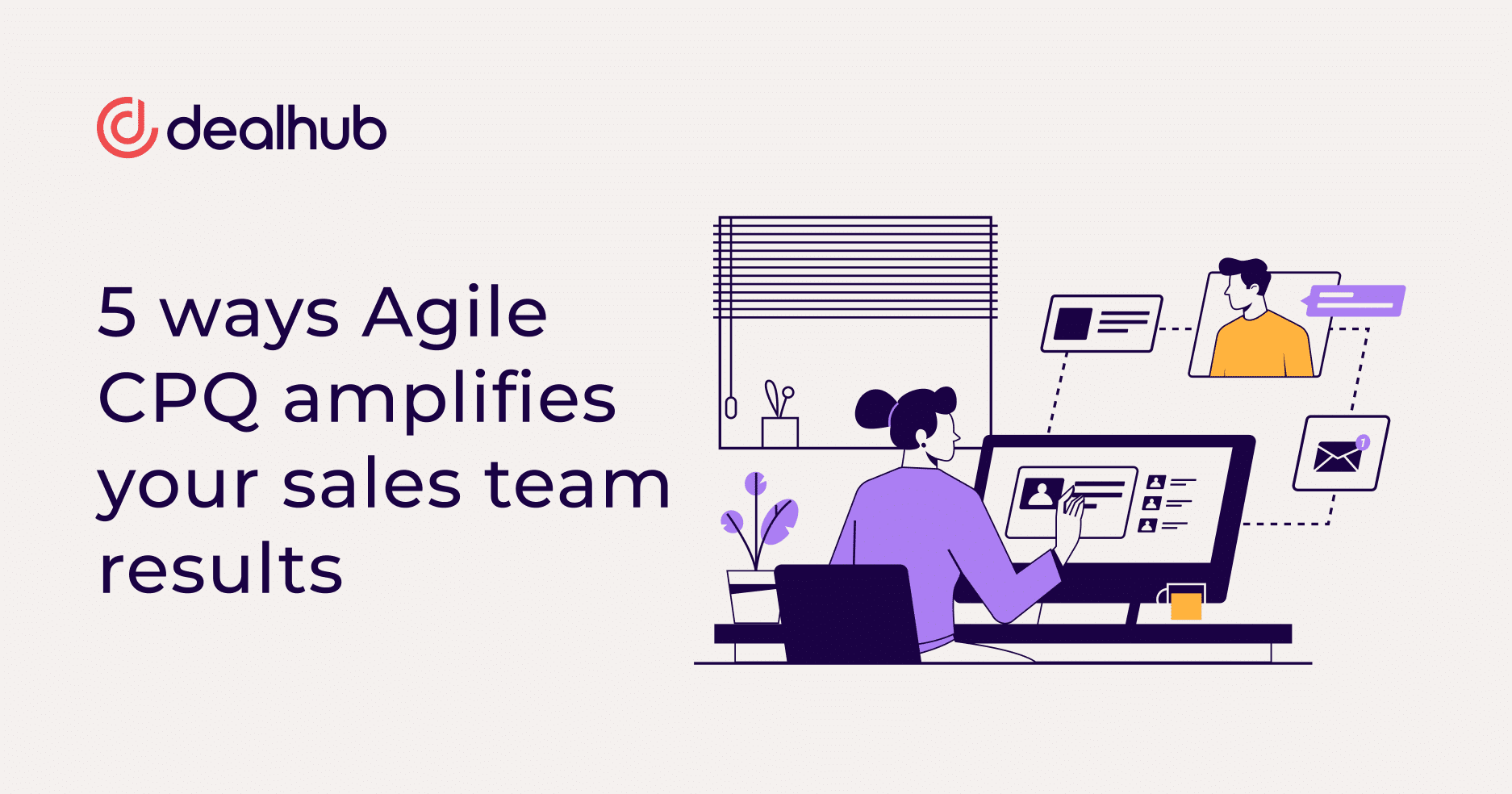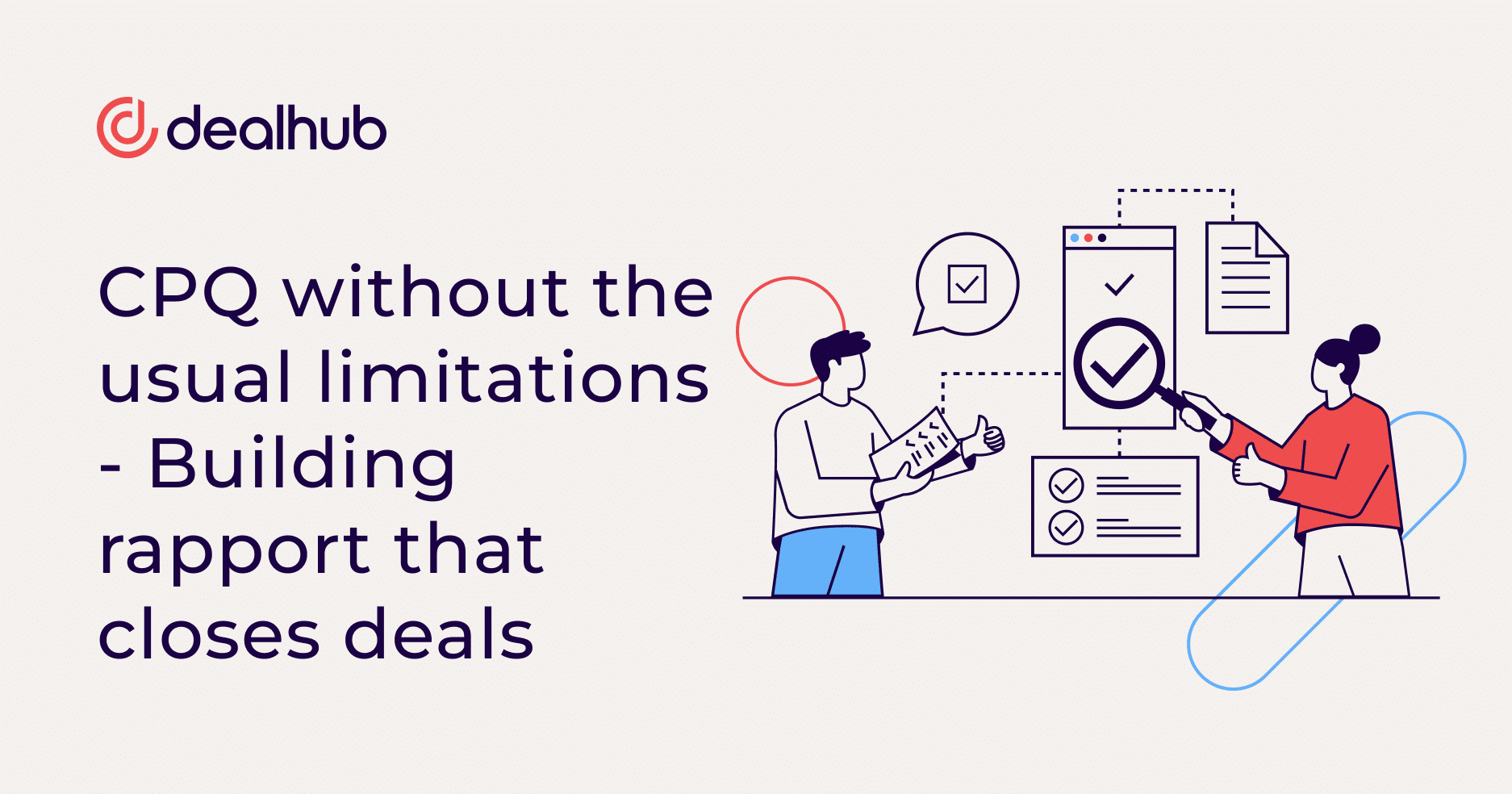Unfortunately, legacy CPQ systems often fall short on delivering these essential features. Companies working with legacy solutions often find themselves struggling with rigid and difficult-to-customize CPQ software that requires substantial resources to implement even the most basic changes. As a result of this inflexibility, businesses are pivoting towards more agile, innovative solutions that can adapt quickly to current market dynamics and modern client expectations while empowering sales teams to provide more customized service. So let’s take a dive into legacy systems, the benefits of agile CPQ solutions, and where the future of CPQ is headed.
Why legacy CPQ is falling behind
Today’s business landscape is shifting, and being ahead of the curve is mandatory for companies that thrive. This is especially true for sales teams facing the ever-increasing challenge of meeting customer expectations while closing deals efficiently. Legacy CPQ software, once considered cutting-edge, now shows signs of incompatibility with modern business practices. As businesses evolve, it’s essential to explore the CPQ pros and cons of legacy versus next-gen solutions to make informed decisions that align with future growth. So, let’s dive into how digital transformation in CPQ is changing the game.
Trends in CPQ: transforming sales to meet customer expectations
Before exploring next-gen CPQ software, we must understand the changing expectations of both sales teams and customers. Today’s sales teams require tools that empower them to work smarter, not harder. Modern sales teams trend towards products delivering streamlined processes, real-time data, and built-in personalized experiences for customers in order to deliver more sales while maintaining high customer service expectations. Similarly, customers want a simplified, seamless experience at every step of their buying journey. They expect products that cater to their unique preferences, offer self-service options, and deliver fast, accurate quotes. Following the latest CPQ trends requires a CPQ solution that can bridge sales and customer expectations while increasing overall satisfaction and delivering efficiency.
What today’s customer wants
Clients are clear in their expectations, and what they expect makes sense from a customer service perspective. They look for a company that can deliver:
Easier access to product catalogs and pricing
Customers want intuitive access to comprehensive product catalogs and pricing information. They expect a user-friendly experience that offers different product options and variations that they can explore freely.
Personalization
Today’s customers seek personalized experiences. They want recommendations based on their specific needs, preferences, and past interactions. Sales teams can close more deals by being flexible and presenting customized product bundles and pricing options.
Visual configuration
Visual configuration tools are integral to the CPQ landscape now that customers expect a dynamic interface that allows them to see how different product configurations would look and function. This feature enhances engagement, reduces purchase errors, and increases the likelihood of a sale.
Fast quotes
Business moves faster than ever, and customers demand fast turnaround times. They expect quick and accurate quotes that reflect their specific requirements. A CPQ solution that can generate quotes at the speed of client expectations increases customer satisfaction and gives sales teams a competitive edge.
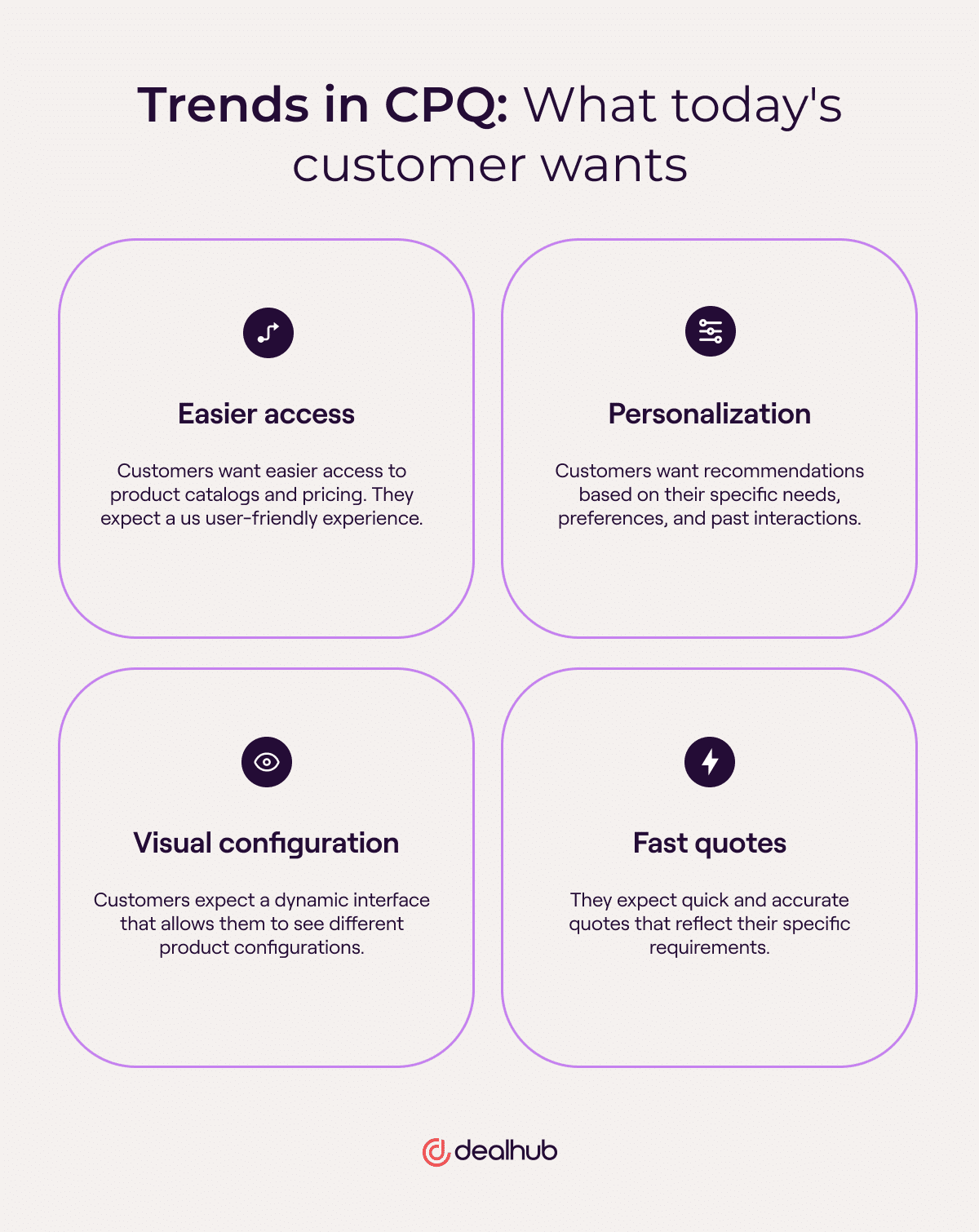
Reasons to switch to agile CPQ
While customer demand evolves and legacy CPQ software struggles to keep up, next-gen B2B CPQ solutions offer several significant advantages for businesses seeking growth and efficiency.
Increase sales team productivity
Legacy CPQ systems often involve manual and time-consuming processes that reduce or disrupt sales team productivity. Agile CPQ solutions automate the repetitive admin tasks, freeing up valuable time for teams to focus on nurturing relationships with prospects and closing more deals faster.
Automate sales processes
Agile CPQ streamlines the entire sales cycle via the automation of key processes. From product configuration and pricing calculations to generating quotes and managing approvals, automation in agile CPQ products reduces errors, accelerates response times, and builds consistency that the entire sales team can benefit from.
Improve data integration
While legacy CPQ systems can complicate data integration, agile CPQ solutions remove data silos and enable seamless data flow between CRM systems, ERP systems, and other crucial business tools. With integration across data sources, information remains accurate and up-to-date.
Get real-time data and reporting
Digital transformation in CPQ provides sales teams with real-time data and reporting capabilities that build transparency into the sales lifecycle. Sales teams gain insights into customer preferences, product performance, and sales trends so that they have the power to make informed decisions and tailor their strategies for individual customers to build relationships and close deals.
Streamline the sales cycle
Agile CPQ software simplifies the sales cycle by eliminating bottlenecks and reducing manual intervention. Automated workflows, streamlined approvals, better order management, and instant access to product information allow sales teams to navigate the entire sales process efficiently.
Accelerate quote-to-revenue
It’s critical to convert quotes to revenue fast. Agile CPQ solutions expedite the quote-to-revenue process on multiple fronts, including eliminating delays, automating approvals, and providing customers with instant quotes. The accelerated process enables companies to seize opportunities and maximize revenue.
Pros and cons of legacy and next-gen CPQ software
Let’s take a closer look at the CPQ pros and cons when it comes to legacy and next-gen CPQ software:
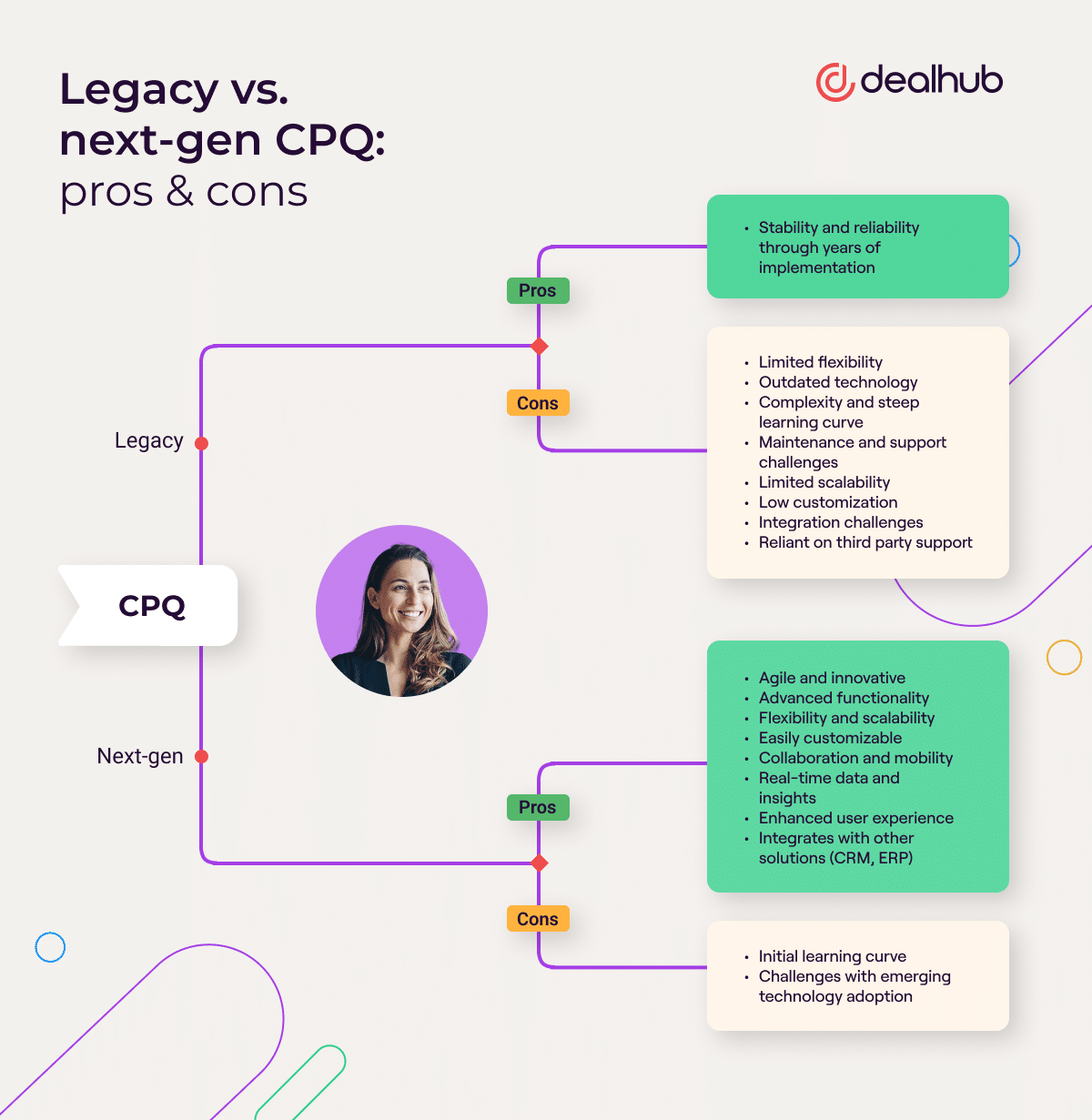
Legacy CPQ software has a proven track record, as it’s been widely used and tested over the years, providing stability and reliability. However, a significant drawback of legacy systems is their limited flexibility. They may have limited customization options and scalability, making adapting to changing business needs and market trends challenging. Integration with other modern tools and technologies can also pose challenges, requiring significant effort and time. On the other hand, next-gen B2B CPQ solutions offer agility and have flexibility baked in. Being cloud-based, they can constantly update, allowing teams to leverage the latest technologies and trends. Developments in CPQ software also provides greater customization and scalability, enabling businesses to adapt to changing market demands and unique business requirements.
While implementing and transitioning to a next-gen CPQ solution may involve a learning curve and initial challenges, such as data migration and ensuring integration with a company’s ERP and CRM, the benefits of increased flexibility and access to innovative features make it a compelling choice for businesses ready to arm their sales teams with technology designed to move at the speed of modern, evolving businesses.
Factors to consider when migrating from legacy to next-gen CPQ
Several critical factors require careful consideration when migrating an organizations CPQ from legacy to next-gen software. Reflecting on these factors and putting a plan in place pre-implementation will ensure setup and onboarding are a snap.
1. Aligning business goals and needs
Aligning the choice of CPQ software with your business goals and needs is crucial. Before choosing a solution:
- Evaluate your specific requirements and growth plans.
- Research the solution’s scalability to clarify if the product can grow with the company.
- Consider factors such as industry specialization, integration capabilities, and ease of customization.
2. Implementation and training
Be clear-eyed about the support and training required for a smooth transition. Consider the implementation timeline, potential operations disruptions, and what training and support are available for your team. A successful migration will require good planning and effective change management.
3. Data migration and integration
Evaluate the ease and accuracy of data migration from these systems to the new CPQ solution. Assess the integration capabilities with existing CRM, ERP, and other essential business tools. Seamless data flow and integration will maintain efficiency and maximize the value of a next-gen investment.
4. Cost and ROI
Don’t just look at the price tag! Consider the overall cost of migrating to next-gen CPQ software. Assess both upfront and ongoing costs, such as licensing fees, implementation, training, and potential customization. Additionally, analyze the ROI (return on investment) potential and any other long-term benefits a new solution can deliver to your organization.
What’s next: emerging trends in CPQ
As technology continues to evolve and forward-thinking companies trade in their legacy CPQs for more agile solutions, there are several emerging trends to keep an eye on:
Agile CPQ
Next-gen CPQ solutions will continue to gain popularity thanks to their adaptability and flexibility in meeting the needs of businesses and customers alike.
CPQ on the cloud
Cloud-based CPQ solutions are becoming popular due to their scalability and accessibility. Cloud-based CPQ is easy to deploy, updates regularly, and reduces maintenance, lessening the burden on internal IT teams. Other benefits include easy remote access, better collaboration, and real-time data synchronization.
Mobile operability
As mobile devices continue to free both sales teams and customers from offices and desktops, CPQ solutions keep pace to provide for a better handheld experience. Optimizing for mobile allows sales reps to access CPQ tools and customer data on the go to deliver real-time quotes and engage with customers anytime, anywhere.
Artificial intelligence (AI) and natural language processing (NLP)
AI and NLP are disrupting every sector they touch and that includes CPQ. CPQ can stand to benefit from AI-powered algorithms that analyze customer data, historical patterns, and market trends to provide personalized product recommendations and pricing strategies. NLP too enables natural language understanding, allowing customers to interact with CPQ systems using conversational language, which enhances the overall experience.
Visual buying experiences
Visual configuration tools continue to evolve to provide increasingly sophisticated and immersive experiences enabling customers to interact with product options in a visually engaging way. Virtual reality (VR) and augmented reality (AR) can transform the buying experience, allowing customers to visualize and customize products in real-world environments.
Integration with customer experience (CX) platforms
CPQ is becoming more tightly integrated with CRMs and marketing automation systems. This provides seamless data sharing and a holistic view of customer interactions so that sales teams can personalize quotes, offers, and recommendations based on customer behavior and preferences.
Advanced analytics and predictive insights
CPQ systems incorporating advanced analytics and predictive insights so users can make data-driven decisions. With better analytics, businesses can identify opportunities and upsell with ease. Predictive insights also improve sales forecasting accuracy.
Configurable commerce
CPQ solutions are evolving to provide end-to-end configurable commerce capabilities. Beyond generating quotes, CPQ systems can easily integrate with e-commerce platforms to create a cohesive buying journey.
Internet of things (IoT) integration
As IoT technology continues its forward march, CPQ integration with IoT devices has an opportunity to enhance customer service while driving sales. When integrated with IoT, CPQ systems can leverage data from connected products to recommend compatible accessories, handle remote diagnostics, and deliver pricing based on usage or subscription models.
As businesses navigate the ever-expanding potential of the CPQ landscape, it is the perfect time to explore and embrace the transformative potential of next-gen CPQ solutions. By understanding the evolving needs of sales teams and customers, considering the pros and cons of legacy and next-gen software, and considering factors related to data migration, companies can make informed decisions that drive business growth, increase internal efficiencies, and deliver exceptional customer experiences. Embrace the future of CPQ and unlock the true potential of your sales team!






